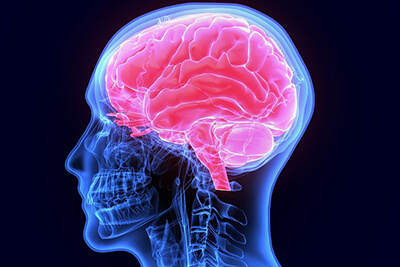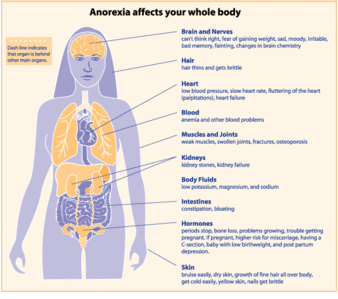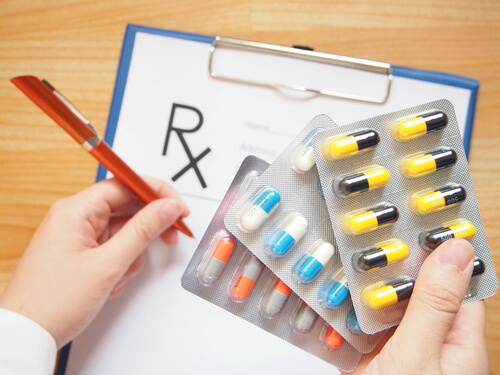Which Describes What a Depressant Does to the Body
Movement and distribution of a drug via blood circulation the so-called mass transport and movement of a drug across biological membranes. What the drug does to the body is called pharmacodynamics.
Anyone that drinks alcohol excessively and rapidly such a.

. Prescription CNS depressants are medicines that can slow brain activity to treat anxiety and sleep disorders. Depressants are substances that can slow brain activity. They do not necessarily make a person feel depressed.
This term refers to the action of the drug at the tissue-cellular- and molecular level. Thus when a drug. These symptoms can include.
Pharmacodynamic processes are specific to and different for each drug. Pharmacokinetics can be simply described as the study of what the body does to the drug and includes. There are many different types of depressants including alcohol benzodiazepines barbiturates and anticholinergics.
The above paragraphs explain what the human body does to the drug pharmacokinetics. Pharmacokinetics describe what the body does to the drug as opposed to pharmacodynamics which describe what the drug does to the body. The primary pharmacokinetic disposition parameter is clearance.
Short-term effects Slow brain function Slowed pulse and breathing Lowered blood pressure Poor concentration Confusion Fatigue 2 Dizziness Slurred speech Fever Sluggishness Visual disturbances Dilated pupils Disorientation lack of coordination Depression Difficulty or inability to urinate Addiction. It can depress the activities of the Central Nervous system which can lead to impairment such as uncontrolled movement inability to think fast or react quickly disturbing feelings and slurred speech. They are used to reduce reactions in the body and relax muscles.
Fatigue Depression Anxiety Irritability Attention and memory issues Insomnia Decreased interest in sex Hostility Mood swings Loss of appetite Paranoia Lack of motor control Mental confusion Panic attacks Depersonalization. A useful mnemonic that can help you remember this process is ADME A bsorption D istribution M etabolism and E xcretion. The rate and extent to which drugs are absorbed into the body and distributed to the body tissues the rate and pathways by which drugs.
Prescription CNS depressants act on the brain by increasing activity of GABA a chemical that slows brain activity. They affect GABA NMDA opiod adrenergic histamine and acetylcholine receptors in your brain. Pharmacodynamics PD very simply describes what a drug does to the body but more technically it is the study of how a certain concentration of a drug produces a.
Pharmacokinetics describes what the body does to the drug through absorption distribution metabolism and excretion whereas pharmacodynamics describes what the drug does to the body. Depressant substances reduce arousal and stimulation. Alcohol is a CNS depressant.
It absorbs it into the bloodstream distributes it to various areas of the body metabolizes it into different compounds and excretes it from the system. Post a description of the patient case from your experiences observations andor clinical practice from the last 5 years. People who start taking prescription CNS depressants usually feel sleepy and uncoordinated at first.
A depressant is any chemical substance that inhibits nervous system functioning. Simply put depressants slow your body down while stimulants speed your body up. Depressants can effect other parts of your brain aswell these are just the parts of.
1 They can affect concentration and coordination. Pharmacokinetics PK is broadly defined as what the body does to a drug PK focuses on the movement of drugs into through and out of the body. 6 hours agoIn an Instagram post Britney Spears revealed she is pregnant with her third child and talks about her past experience with perinatal depression.
They affect the central nervous system slowing down the messages between the brain and the body. There are four main things that the body does to the drug. Mass transport is not affected at least not to a large extent by specific properties of a drug.
Which of the following best describes synergistic drug interactions. Confusion slurred speech NEGATIVE. In principle the access of a drug to its site of action is dependent on two broad processes.
The effects of two drugs sum together. The effect of one drug cancels the effect of another. Alcohol can affect a persons ability to think perfectly and also leads to death.
Depressants slow your heart rate breathing and brain activity and make you relaxed and sleepy while stimulants. The effect of one drug does not alter the effect of another drug. They slow down a persons ability to respond to unexpected situations.
Experts explain the condition and how to combat it. For example PK assesses drug administration Is it better to take the drug orally or to inject it drug distribution How does the antibiotic I just took. Short term effects of depressants relaxation of muscles slow brain function lowered blood pressure heart rate POSITIVE.
Depressants are often used in clinical settings to relieve a host of health problems though they are also commonly abused as recreational drugs. They slow down the function of the nervous system by enhancing an effect of a type of neurotransmitter called GABA. Pharmacokinetic information is required to optimize the pharmacodynamic response.
When the Ecstasy wears off individuals may experience a difficult crash or slight withdrawals.

Effects Of Drugs Alcohol On The Nervous System



No comments for "Which Describes What a Depressant Does to the Body"
Post a Comment